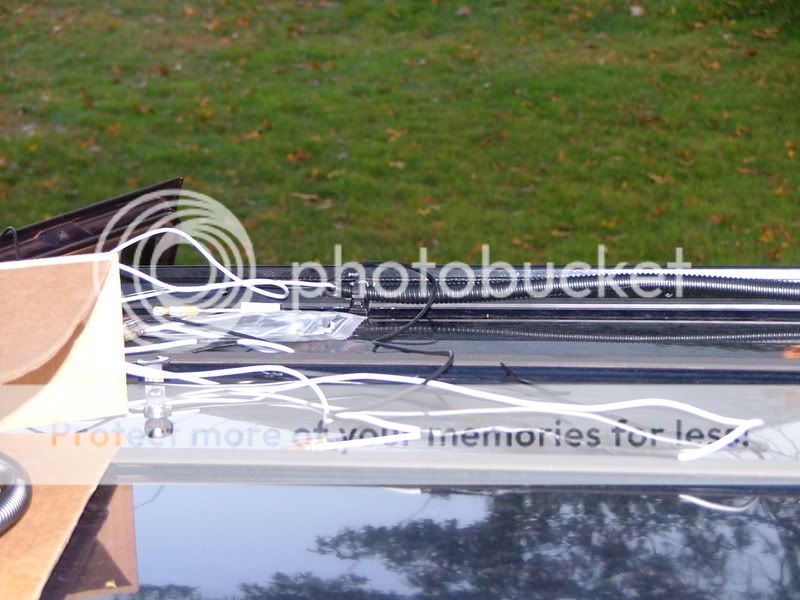Bdiddy11 said:
scooby I do have the plastic ends... so where the luggage rack screws into the roof rail, that's how you grounded it? Just with the connection between the nut and rail is sufficient? And 5-90, what do you mean by two-lead? The electrical aspect is a little new to me... out the back of the light comes a red wire that connects to the "Y" connector that goes down to the relay switch... and a black wire with a "O" ring to be grounded.. so what do I do with that? I guess I didn't thorougly understand how to do it... thanks again. I'm a little noobler when it comes to somethings... I wired my power seats in fine, but these lights are another story.

eace:
If you go to the hardware store, in the electrical section, you should be able to find black rubber jacketed heavy-duty "extension cord" type cable with two or three leads (black/white or black/white/green) enclosed in the jacket. This is good stuff - I use it all over. You'll see it with callouts like "14/2" (14AWG, two conductor,) "16/3" (16AWG, three conductor,) or "14/2 W/G" (14AWG, two conductor, with ground - total three wires.) It should be on reels, unterminated, and priced per foot.
Figure out what gage your light kit has in it (usually 14-16AWG, unless you got a stupd bright kit) and select your "two-wire" lead accordingly - so you should end up with 14/2 or 16/2. The jacket will be black, but the wires inside should be black and white. Use the white for power, and the black for the ground.
Terminate the black lead with a ring lug that will fit over the mounting bolt (usually 5/16", sometimes 3/8") and put it under a washer on either side - under the bracket up top, or under the nut down bottom. Doesn't matter - as long as it's got contact (it should) and you don't end up "scrubbing out" the ring (thus, the washer. A flat washer is perfect.)
The white wire can be terminated with whatever mates to the power connector for the lamp assembly - most often, a 1/4" "spade" style quick-connect.
Sometimes, the lamp assembly will have a ground connection on the back of the reflector bowl - check to make sure (it's fairly common with Hella, for instance.) If there's a ground lug on the back of the bowl, you'll probably have to run a ground wire anyhow - that's why I like using the two-wire cable.
Advantages to multi-conductor cable for lighting:
You can pull several wires at once.
It has an "overjacket," in addition to the insulation on the individual conductors
It's usually waterproof (especially the SJOOW-rated stuff, if you can find it. It's also grease and oil resistant!)
It's
very flexible!
It's readily available.
Can't think of any downsides - I've been using this stuff for vehicle lighting for a number of years now...





